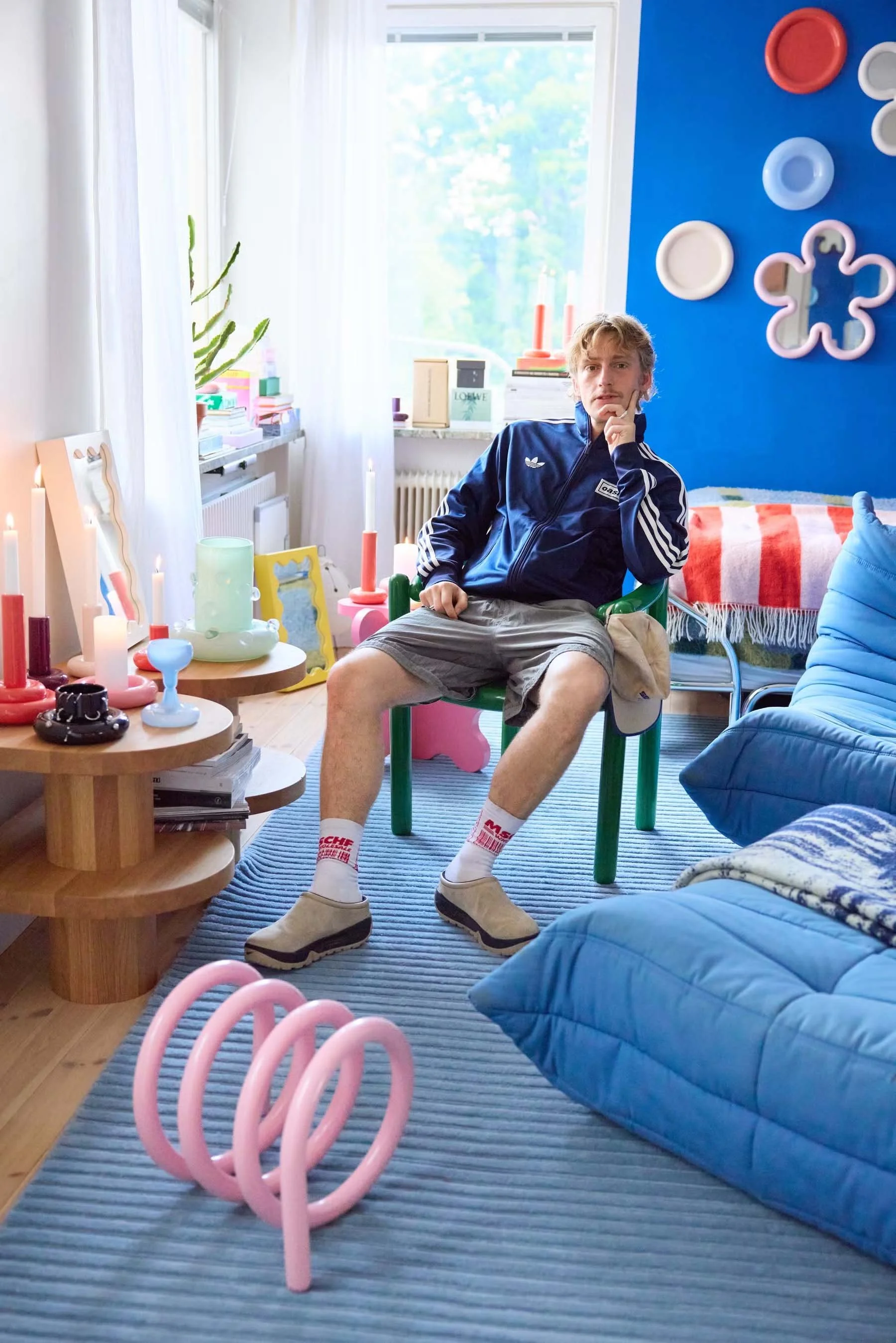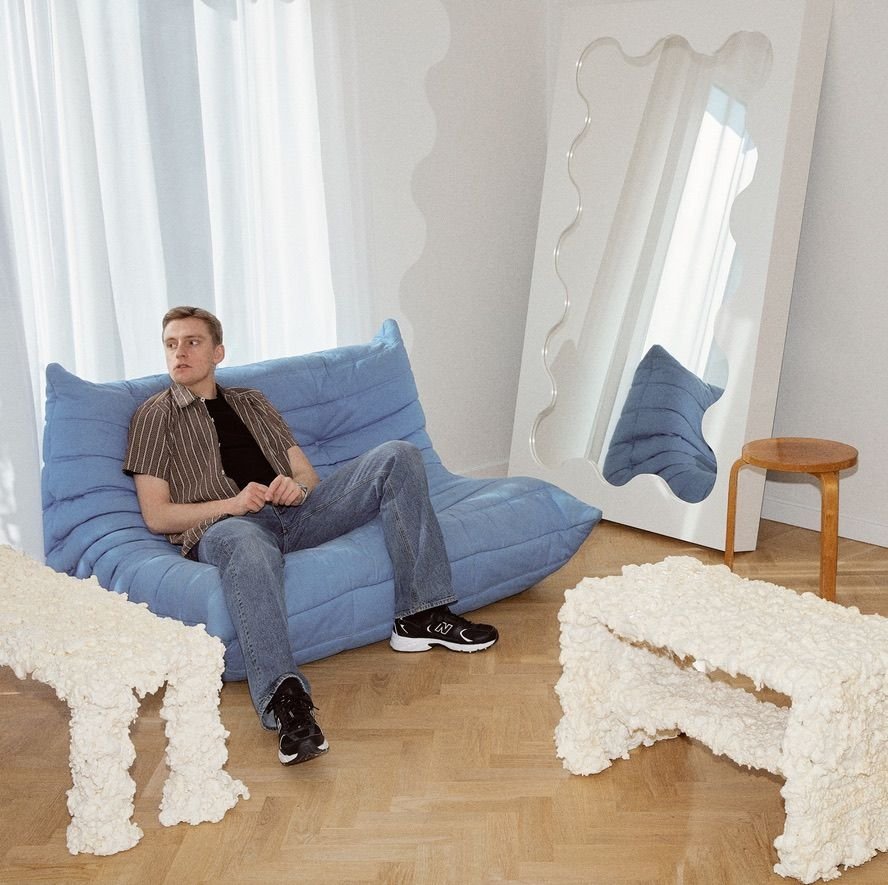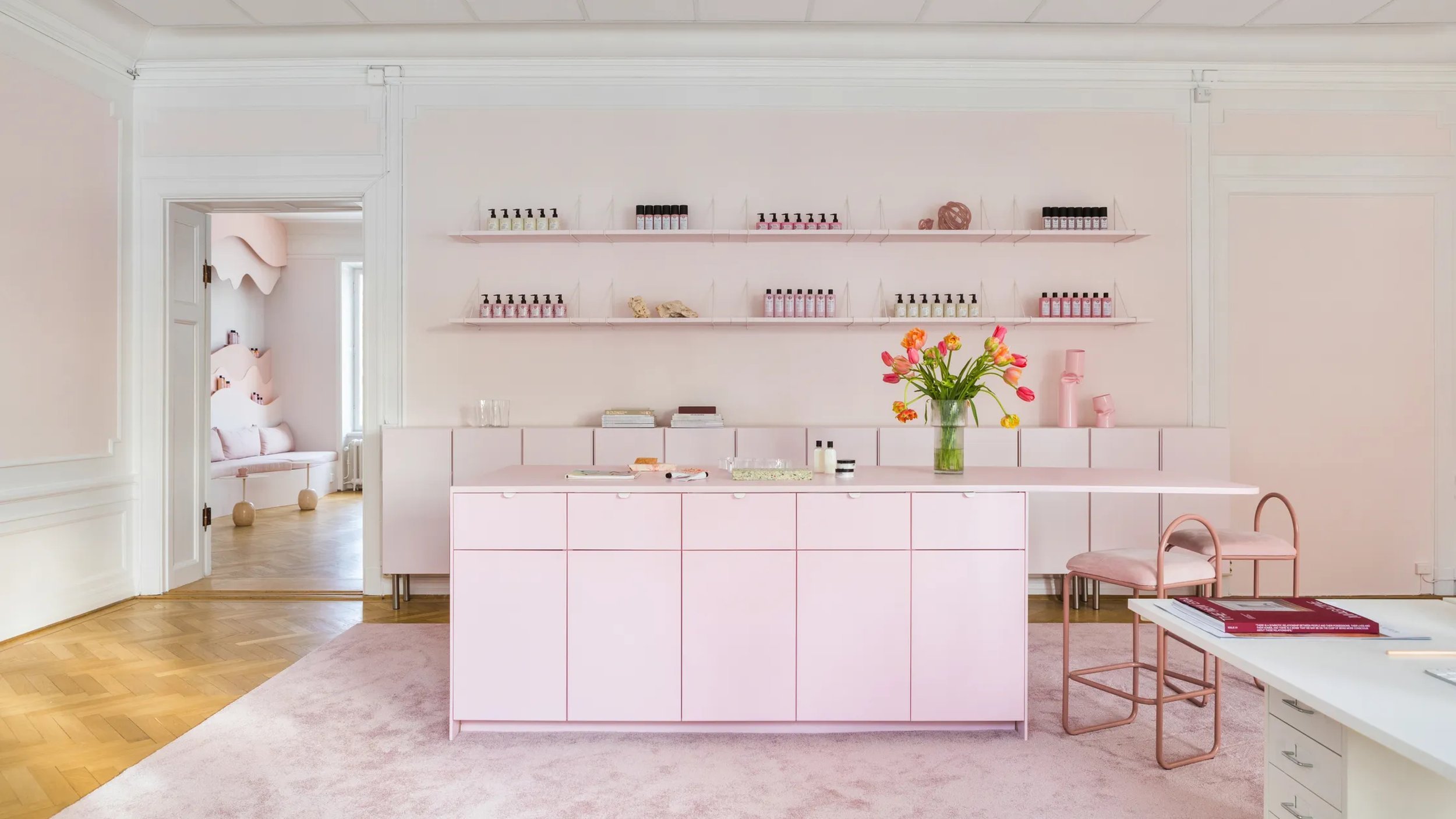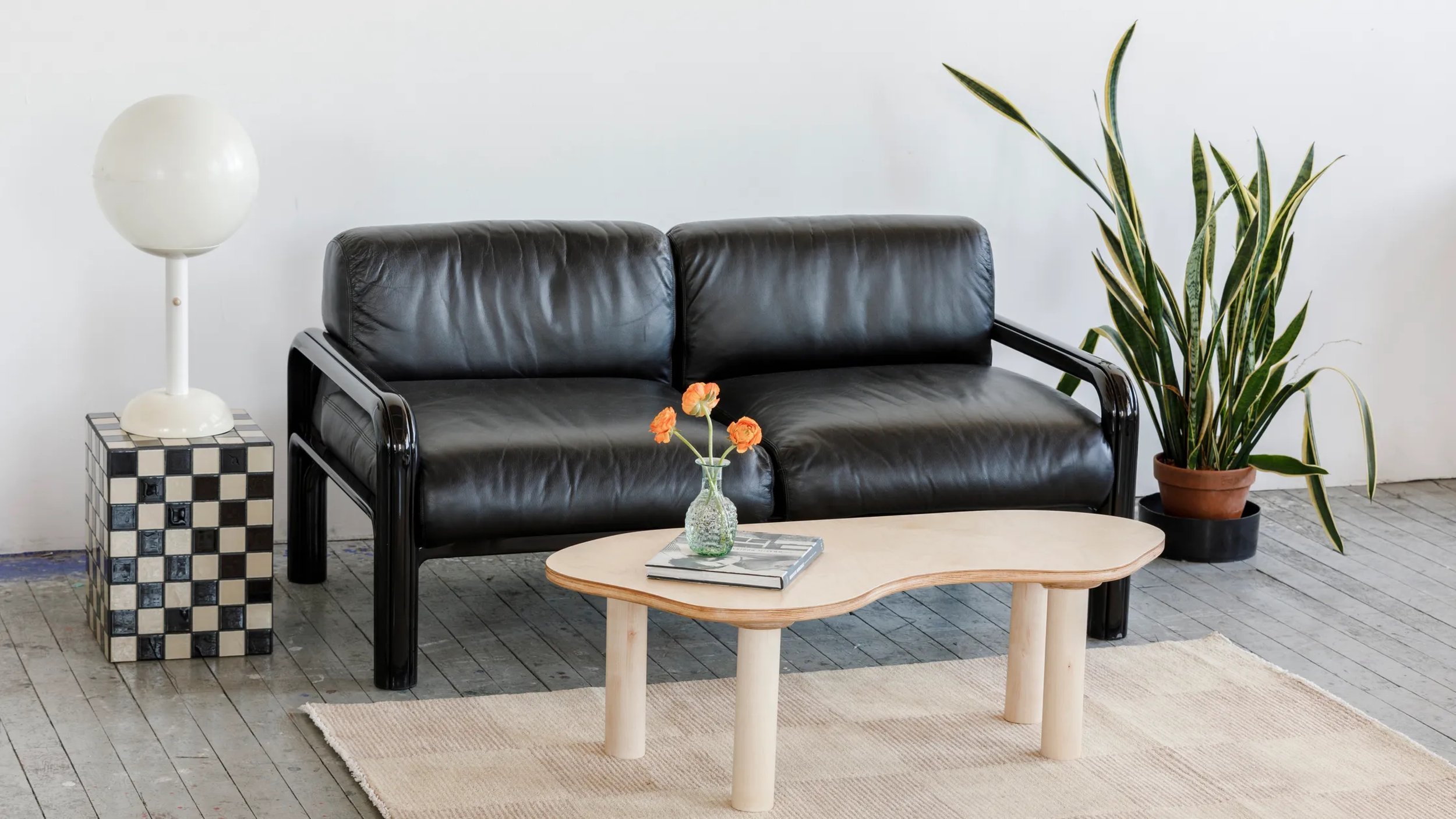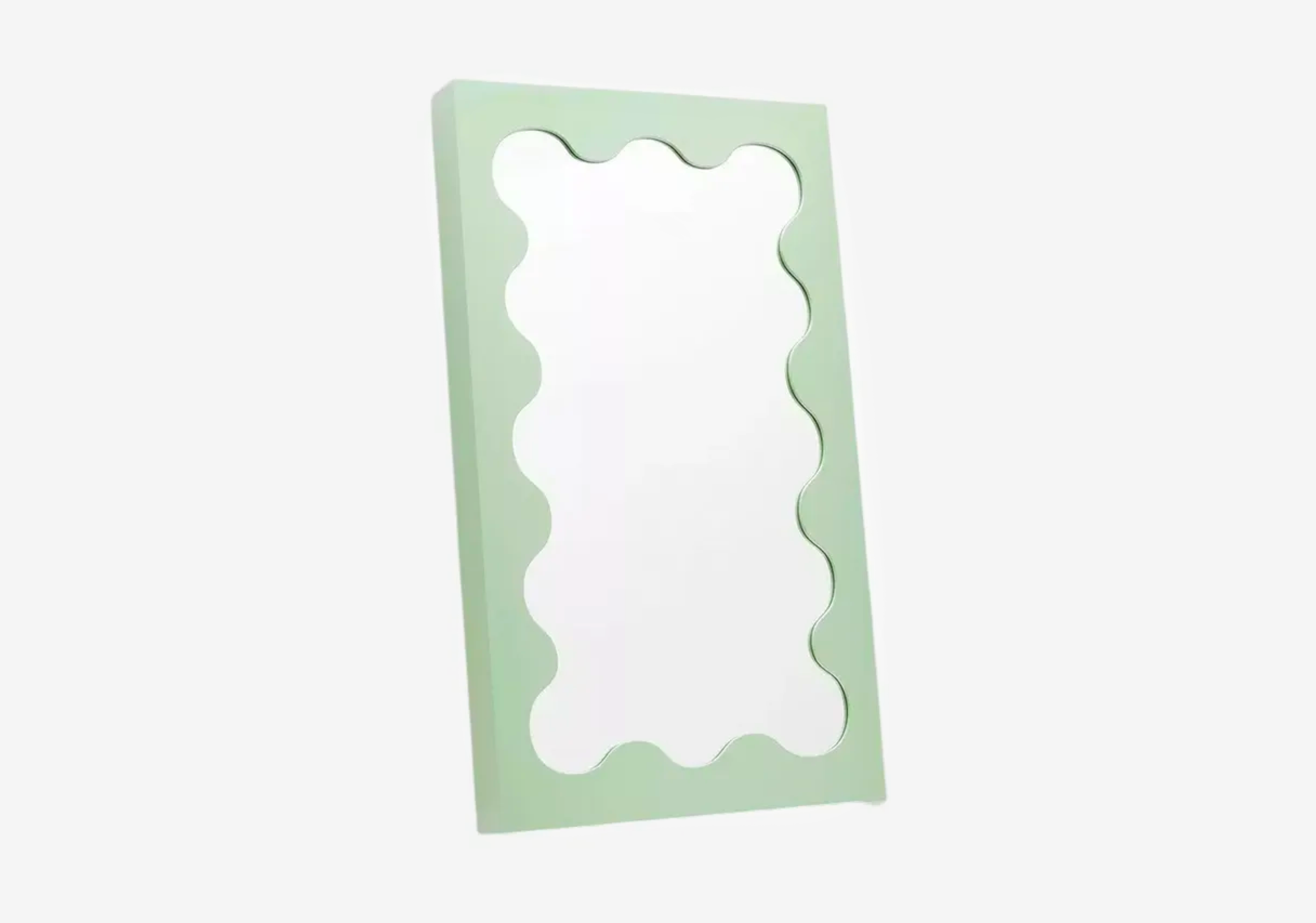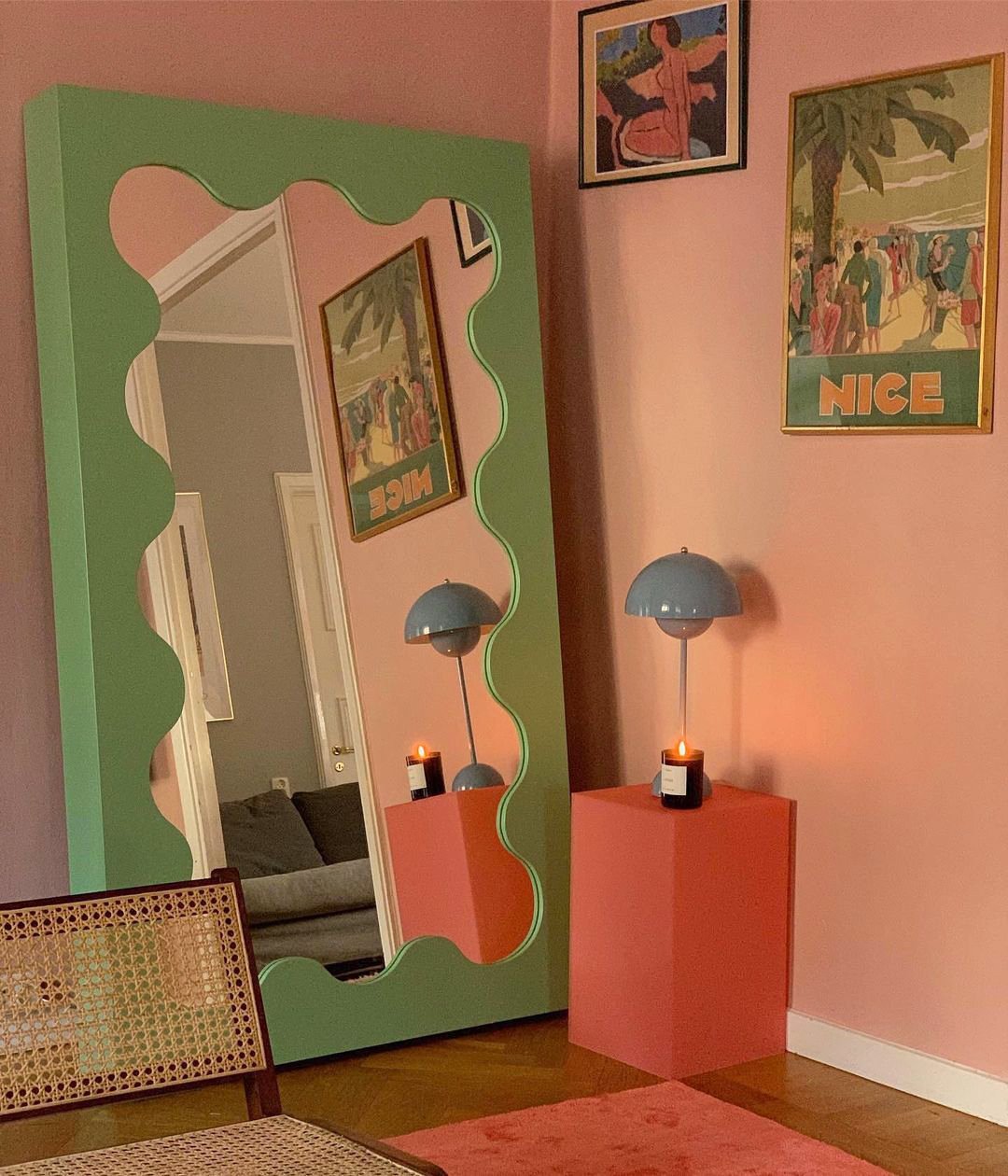Gustaf Westman captures a picture using the Curvy Mirror effect
CURVY MIRROR
Gustaf Westman x Kristina Vilyams
July 2020
Collaboration with Swedish designer Gustaf Westman on the development of the Curvy Mirror AR effect, capturing the essence of his signature sculptural design and extending it into an immersive, interactive digital environment.
Stockholm-based designer Gustaf Westman transforms everyday objects into bold, sculptural icons that blur the boundaries between art, furniture, and lifestyle. With his wave-framed Curvy Mirror becoming a global phenomenon and Rihanna-level fandom across aesthetic-obsessed Instagram feeds, Westman’s aesthetic of vibrant hues and fluid forms has redefined contemporary Scandinavian design. His 2025 collaboration with IKEA—including an oversized meat-ball plate and pastel spirals—proved that fun can be serious business in design. His work has been featured in Financial Times, Wallpaper* Mag and Architectural Digest, earning him a reputation not just as a designer, but a cultural force whose pieces demand to be seen, touched and remembered.
Gustaf Westman: Curves, Color, and the Joy of Design
Stockholm–based designer Gustaf Westman emerged from a foundation in architecture to craft an unmistakable design language—one built on fluid curves, vivid hues, and the remixing of everyday objects into sculptural icons. After studying at Chalmers University of Technology in Gothenburg and interning in Stockholm, Westman launched his eponymous studio in 2020. His breakthrough came with the now-legendary Curvy Mirror, a wavy-framed design that quickly went viral and brought his playful aesthetic to a global audience. 
Westman’s studio operates on the principle of small-scale, thoughtful production: made-to-order furniture and objects crafted in collaboration with Swedish woodworkers, hand-blown glass and custom ceramics. His work draws inspiration from post-modern pioneers such as Memphis Group and Swedish design history, yet remains fully contemporary—design that delivers joy rather than mere function. One of his most-covered collaborations came with IKEA’s 2025 collection, featuring pastel-toned plates and objects including a dedicated meat-ball plate, which exemplified how Westman blends humour, cultural reference, and design-for-life.
Gustaf Westman’s Stockholm flat. Courtesy of Gustaf Westman / Kindred
Celebrities and influencers have amplified his reach—fans range from Olivia Rodrigo to Kaia Gerber—while Westman himself recently opened his Stockholm home to the public via a design-swap programme with Kindred, letting the world step into the full immersive vision of his creative universe.
In every piece—from the Chunky Cup to the Blob Sofa—Westman delivers what he calls “main-character energy”: design that isn’t just seen, but felt, inhabited, and remembered.
IKEA x Gustaf Westman’s Meatball Plate. Courtesy of IKEA
Curves in the Digital Dimension
The Curvy Mirror, Gustaf Westman’s breakout design, has become more than a piece of furniture — it’s a cultural icon. With its wavy frame and playful silhouette, the mirror encapsulates Westman’s distinct language of curves and color, a language that has captured the imagination of design enthusiasts worldwide. Recognized across major media and embraced by celebrities, the Curvy Mirror’s rise from a Stockholm studio to a global phenomenon speaks to Westman’s ability to transform everyday objects into sculptural statements of joy.
Bringing this influence into the digital realm, a bespoke AR try-on effect was developed in collaboration with Kristina Vilyams. The project translated Westman’s unmistakable aesthetic into an interactive, immersive environment, allowing audiences to place the Curvy Mirror within their own spaces and experience its bold presence firsthand. By bridging physical design and extended reality, the collaboration preserved the mirror’s tactile allure while expanding its accessibility — turning an object once admired on social feeds into a digital artifact of contemporary design.
This partnership not only extended Westman’s playful ethos into new creative dimensions but also demonstrated how digital innovation can amplify iconic design. The AR effect became a meeting point between craft and technology, reaffirming Westman’s position as a designer who blends sculptural artistry with cultural resonance — and showing how even the most recognizable objects can find new life in the evolving landscape of virtual design.
FEATURES
Architectural Digest
This Stockholm Salon Will Change the Way You Think About Pastels
Harper’s Bazaar
Architectural Digest
What’s Next After the Wiggle Trend? We Asked 9 Designers for Their Predictions
ELLE SWEDEN DESIGN AWARDS
Discover the winners of ELLE DECO Sweden Design Awards 2021 across nine categories


